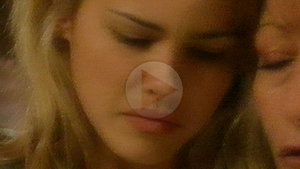 Welcome to Unicorn, your one and only resource for the talented Aussie actress Isabel Lucas, known from "Home & Away", "Transformers: Revenge of the Fallen", "MacGywer" and "Careful What You Wish For". Here you can find detailed information, exclusive high quality photos, all the latest news, as well as other multimedia such as videos, audio files and graphics. I hope you will enjoy the site, and don’t hesitate to get in touch if you have any questions or concerns. Make sure to bookmark us, and check back!
Welcome to Unicorn, your one and only resource for the talented Aussie actress Isabel Lucas, known from "Home & Away", "Transformers: Revenge of the Fallen", "MacGywer" and "Careful What You Wish For". Here you can find detailed information, exclusive high quality photos, all the latest news, as well as other multimedia such as videos, audio files and graphics. I hope you will enjoy the site, and don’t hesitate to get in touch if you have any questions or concerns. Make sure to bookmark us, and check back!- by Sara
- on March 17, 2022
- with 0 Comments
- filed under Activism Instagram
Hello Izzy fans! We haven’t been able to find any new Isabel news/videos/photos lately, so we’ve taken her time off to get a small break ourselves. For those who don’t follow Isabel on Instagram, she has been very busy the last few weeks helping out in the flooded areas in Queensland and NSW. They’ve been hit with some catastrophic floods, which has resulted in many people losing their lives, their homes and all their possessions. Isabel has used her platform to encourage people to help if they’re able to, as well as to inform people in affected areas how they can seek help themselves. Several small organisations have been created to help those who are affected, and the community spirit shown through Isabel’s stories have been incredible.
I’m attaching an article from The Guardian which explains how you can help below, but if you would rather 1) help on the ground yourself, or 2) donate to smaller charities who show through their social media accounts exactly how your donations are spent, I recommend checking out Isabel’s pinned Instagram stories “floods”.
Isabel also seems to have adopted two dogs, and have encouraged others who are able to, to do the same. With the animal shelters being hit by the floods, there are unfortunately many animals without a safe home at the moment.
Is it better to donate to established charities such as the Red Cross or to crowdfunding campaigns? And should you give money, or goods?
More than $13m has been donated to support those affected by the devastating floods in Queensland and New South Wales, and most of the money has been directed towards peer-to-peer fundraising efforts such as GoFundMe. Many of those crowdfunding campaigns have been set up by people living in the flooded regions to cover urgent costs and fund relief and rescue efforts, including more than $20,000 raised to run a rescue helicopter.
Since 24 February, more than $9.6m has been donated across 1,700 fundraisers on the peer to peer platform GoFundMe. About 22% of all donations has been directed towards fundraisers based in the NSW northern rivers region. In Mullumbimby alone, 50 different campaigns have raised a total of $400,000.
One fundraiser, which aimed to deliver food to those affected by the floods across the region, raised $173,834 before turning off donations – far outstripping its fundraising goal of $5,000. But as the waters begin to subside and formal relief agencies move in to begin the long process of helping communities recover, those community-run efforts are being replaced by formal charities.
As of 9 March, the Red Cross Queensland and NSW flood appeal has raised $3.86m, and St Vincent de Paul has raised $162,000. The Salvation Army, which is aiming to raise $10m for flood relief, has repurposed $1m of funds from its Red Shield Appeal to begin initial recovery efforts.
So what should you do if you want to help?
Donate money, not goods
Flood-affected communities have been overwhelmed with donations of goods, clothes and non-perishable foods. These items are vital in the first few days following a disaster but they are also bulky and difficult to store and distribute, and it is a lot of work for volunteers to check every item to make sure it is in good condition.In almost every case, money is a more useful donation than goods. If you do have particular goods to donate, it’s good practice to call ahead and check that the community or charity is happy to receive them.
Crowdfunding versus established charities
Crowdfunding is a great way to ensure funds are directed to a specific person, purpose or community, provided the campaign has been verified.GoFundMe says it verifies fundraising campaigns published on its site and will not release funds raised on behalf of another person until the intended recipient has signed on as a party to the campaign and their identity has been verified.
But crowdfunded campaigns are not subject to the same levels of compliance checks and reporting requirements as formal charities.
“Charities are heavily regulated and we have to adhere to a whole lot of different regulations and compliance requirements, which is part of being a charity,” Red Cross’s head of fundraising, Vanessa Byrne, said. “And for us when we launch an appeal our focus is always to ensure … we allocate the money where it is needed the most.”
After the 2019-2020 bushfires, the Fundraising Institute of Australia issued a new practice note to set out the minimum standards for charities that are fundraising in times of disaster. It sets out regular, transparent reporting of the funds raised and dispersed.
Registered charities are audited and required to produce regular reports on how funding from particular appeals has been used.
“Transparency is so very important to us,” said Major Bruce Harmer, from the Salvation Army. “I think it’s important that the Australian public have confidence in the Salvation Army, not just in doing the work, but in reporting back and saying this is what we did on your behalf and thank you, so much, on behalf of the people we’ve been able to support with the funds that you’ve donated.”
Byrne encourages people who are thinking of donating to research the organisation or fundraiser first.
“People should make sure they have a look at what the organisation is saying the intention of their appeal is, and if somebody is still not sure about the information they have read, then call the charity and ask for more information,” she said.
What are charities doing in flood zones?
The Salvation Army has been running evacuation centres in Lismore, helmed by the heads of the Salvation Army northern rivers branch, Philip and Donna Sutcliffe.As of 10 March, they have provided 40,000 meals and issued 1,109 recovery grants – quick payments of $160 per adult and $60 per child issued on a debit card. Applications for both the recovery payments and for larger grants can be made at local recovery hubs.
Those cash grants will be supported by wraparound services, which are ongoing.
“What organisations like the Salvation Army are looking for is the opportunity not just to do a transaction and give people some money and say ‘we hope you’re OK’, we certainly do do that, but we also do wraparound services that stay with those people for years to come,” Harmer said. “We still have out in the field people working with those affected by the bushfires in 2019-20. They have now been repurposed for flood support … but they will be going back to those communities.”
The Red Cross has 550 staff and volunteers across Queensland and northern NSW working on the flood response, and is running 24 evacuation centres which have housed more than 11,000 people. Thirteen of those centres are in the northern rivers. It is also running the register find unite service, which enables people missing in the floods to register themselves as safe.
“Our focus is always on making sure that as needs arise during and after a disaster that we’re allocating the money where it’s needed the most. “


















